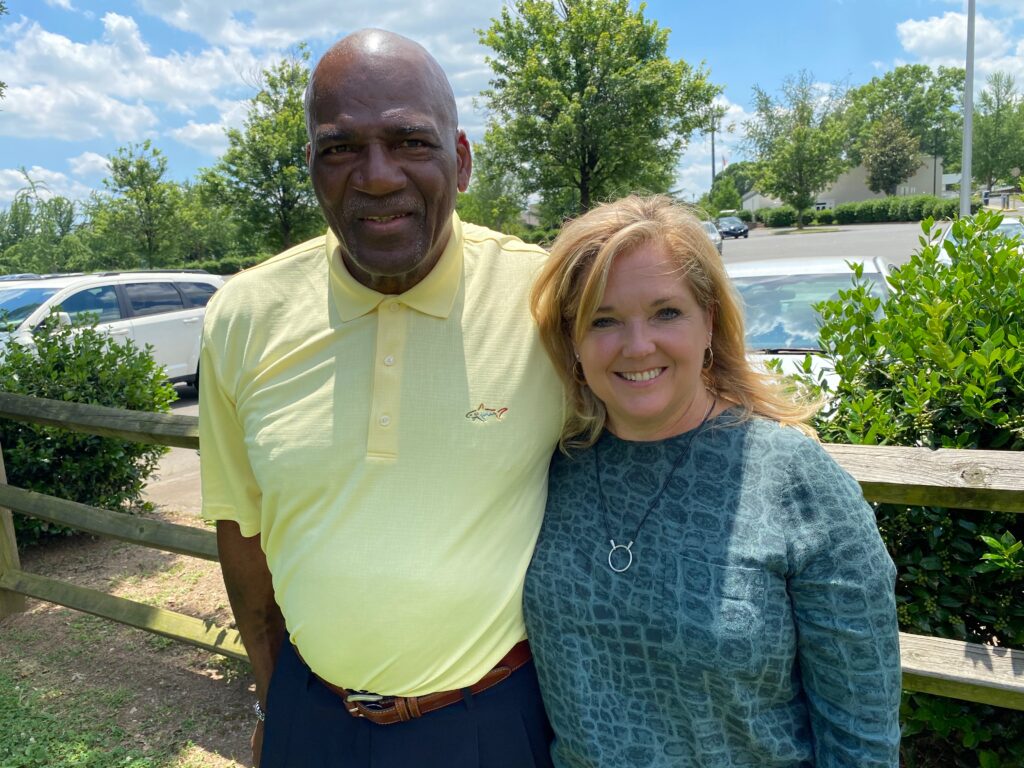Charles Wakefield, Jr. discovers new evidence that casts doubt on his murder conviction from 1975
Charles Wakefield Jr., Greenville, SC
The Looper Murders
On January 31, 1975, Lieutenant Frank Looper was the Chief Officer of the Greenville County Sheriff’s Department’s anti-narcotics unit. He was inside his home while his father, Rufus, was working in the garage. Through a window, Vera Looper, Rufus’s wife and Frank’s mother, noticed a black man she found suspicious walking up the driveway and heading towards the garage. Concerned for her husband, Vera asked Frank to go check on his father. Frank took his service pistol and went into the garage. Vera saw the black man come out of the garage and then turn around and go back in. Moments later, she heard two gunshots and saw the black man run out of the garage. She went to the garage and found her husband and son shot. Both men had .32 caliber bullet wounds one-inch above their left ears. Both men died from their wounds.
The initial investigation revealed three eyewitnesses: Vera Looper and neighbors Edna Mae Mashburn and Viola Owens, who were sitting on Owens’s porch with a view of the Loopers’ garage. Both neighbors saw a “colored boy” run out of the driveway and up the street. They described the man who ran away from the scene as 5’10” and 150-160 pounds with short, neat looking hair. Vera Looper was the only one of the three to testify at Wakefield’s trial. She had a clear view of the shooter, but could not identify him later. Vera did, however, state that the man did not have an afro, because he was wearing a hat.
It is unknown what brought law enforcement’s interest to Wakefield, but on the evening of the murders, he was brought in on an outstanding warrant for a street fight and was questioned about the murders. He denied knowing anything. Police conducted a paraffin test, to determine if Wakefield had fired a gun, which he passed. He also passed a polygraph and a truth serum test. All efforts by police to link Wakefield to the Loopers’ shooting failed and Wakefield was released a few days later.
While in the jail, Wakefield met a man named Charles Brown and the two hatched a plan to try and collect reward money offered in the Looper case. Wakefield contacted Mike Bridges, who was the lead investigator, and told him that he was at the Looper garage the day of the shooting and saw Brown there. Bridges discovered that Brown was in jail the day of the shooting and the story fell through. Bridges became convinced that Wakefield was involved in the murders.
During his time in Greenville City Jail, Wakefield also met a man named Tommy Shaw, who was an informant. Shaw set Wakefield up by asking him to bring Shaw a gun, specifically a .32 caliber handgun, to the city jail when Wakefield got out. After Wakefield’s release, he brought the gun to the jail and was arrested for aiding and abetting an escape. Ballistics tests did not link the gun to the Looper murders.
Nine months later, the pressure to solve the murders was on and a new eyewitness, Mae McIntyre, came forward to tell police she was at the Loopers’ garage the day of the murders. She identified Charles Wakefield as the shooter. Interestingly, Vera Looper and the two neighbors never mentioned seeing McIntyre there that day. Despite this, based on McIntyre’s identification, the Greenville County grand jury indicted Wakefield for the Loopers’ murders on October 27, 1975.
The Trial of Charles Wakefield
Less than a month after Wakefield was appointed counsel, his trial before an all-white jury began on February 23, 1976. Because physical evidence did not link Wakefield to the murders, the State based its case on three witnesses: Wyatt Earp Harper, Mae McIntyre, and Silas Jones.
Wakefield had never met Wyatt Earp Harper. When Wakefield’s attorney, Grover Parnell, learned that Harper was a witness, he went to the jail to interview him. Harper told Parnell that he had no knowledge of the Looper murders. The next day, Harper testified that he had known Wakefield for years and was with him the evening before and the day of the crime. He testified that he and Wakefield planned to rob a liquor store but instead decided to rob the Looper garage, with Wakefield as the triggerman and Harper as the lookout. On the podcast “Murder Etc.,” Eric Gottlieb, a New York attorney who interviewed Harper, states that Harper “basically said that the first time he had ever seen Charles was when he testified against him at the trial. He didn’t know the guy. He was pressured to testify falsely against him and that everyone knew Charles didn’t kill the Loopers.”
Mae McIntyre testified she was in the Loopers’ garage the day of the murders but had never told anyone this other than her daughter. She claimed she saw a black man entering the garage as she was exiting. McIntyre also said she heard sounds like a car backfiring and then saw the same man run out of the garage and up the street. McIntyre denied she fabricated her testimony to help her son-in-law, Mike Cowart. But it did end up helping him. After the trial, Jim Christopher, a lead investigator in the Looper murders, arranged Cowart’s transfer from the state prison system to the local Greenville jail.
Silas Jones testified that he overheard the conversation of Charles Brown and Charles Wakefield trying to scheme a plan to claim the reward money for the Looper murders. He also told the court that he had a conversation with Charles Wakefield about guns, specifically that Charles Wakefield had a .32 caliber revolver and was trying to make his wife get rid of it before the police did a search of their house. Although Silas had state and federal charges, he never served his federal sentence.
Despite alibi evidence, Wakefield was found guilty and sentenced to death by electrocution. After a decision from the United States Supreme Court, the South Carolina Supreme Court found the death penalty statute unconstitutional and Wakefield was resentenced to life in prison.
Postconviction

Wakefield has always maintained his innocence. Postconviction applications for relief in 1991, 1993, and 2002, which included a full recantation by Wyatt Harper, were all denied. A recent, nationally recognized Greenville podcast by journalist Brad Willis, “Murder, Etc.”, has uncovered evidence supporting Wakefield’s innocence and, importantly, gaining the support of the Looper family. Based on the new evidence, in October 2020, the Center, along with South Carolina co-counsel Josh Kendrick, filed a post-conviction motion for a new trial. An amendment was filed in November 2024, which included evidence that a gun connected to a murder in close proximity in location and time to the Looper murders was tested in 1979 against the bullets from the Looper murders and it was determined the bullets came from that gun or one with similar standards. An evidentiary hearing at the end of April 2025 will be held for Wakefield to present the new evidence and finally clear his name.
News Articles:
Get in Touch. Get Involved.
